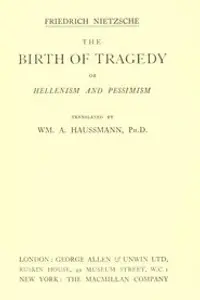Summary
The Birth of Tragedy (1872) marks Friedrich Nietzsche’s first major work and introduces his revolutionary ideas on art, culture, and the human condition.
Drawing heavily on Greek tragedy, especially the works of Aeschylus and Sophocles, Nietzsche explores the dual forces he calls the Apollonian (order, reason, beauty) and the Dionysian (chaos, passion, ecstasy) as the two central artistic impulses in ancient Greek culture.
Nietzsche argues that the greatness of Greek tragedy lay in its unique fusion of these two elements, creating art that was both structured and emotionally raw. He claims that the decline of this synthesis, especially due to the rationalism of Socrates and the subsequent dominance of logic and morality, led to a cultural and spiritual degeneration.
By calling for a return to the Dionysian spirit in modern life and art, Nietzsche sets the stage for a radically new aesthetic philosophy—one that embraces life’s darkness and irrationality rather than fleeing from it.
